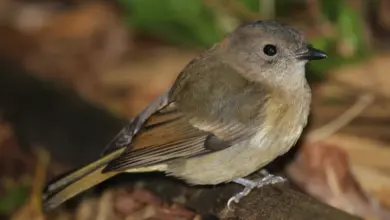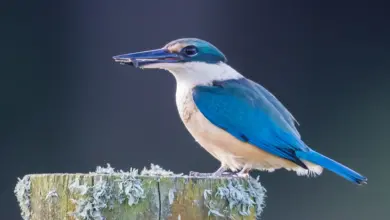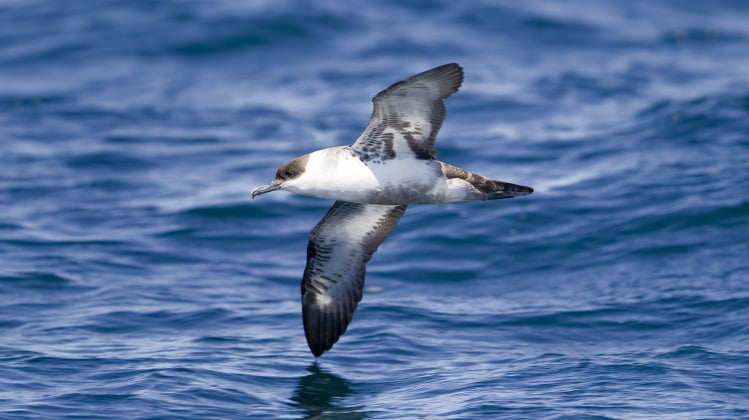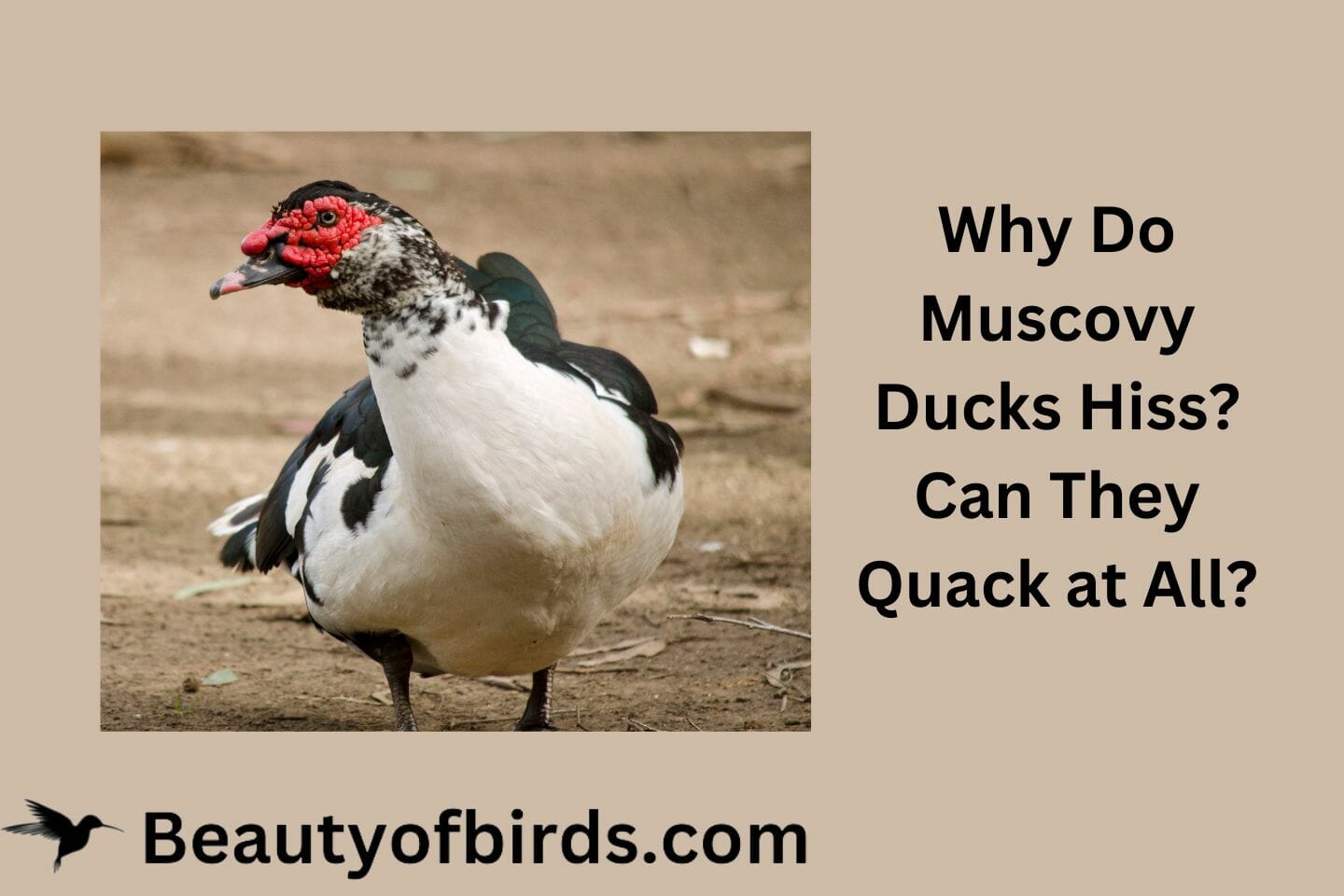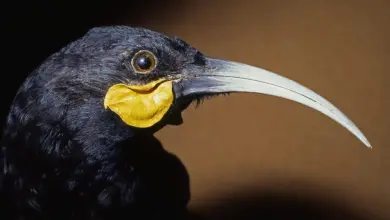The Yellow-eyed Penguins (Megadyptes antipodes) or Hoiho is a penguin found in New Zealand, on the south-east coast of South Island, Foveaux Strait Stewart Island/Rakiura, and Auckland and Campbell Islands.

Yellow-eyed Penguins Description
This is a fairly large penguin, averaging 75 cm (30 in) long and weighing about 6.3 kg (14 lbs).
It has a pale yellow head and paler yellow eyes with black feather shafts. There is a band of bright yellow running from its eyes around the back of the head.
The juvenile has a greyer head with no band and their eyes have a grey iris.
Yellow-eyed Penguin Nesting / Breeding
This penguin usually nests in forest or scrub. It feeds mainly on blue cod, red cod, opal fish, sprat and squid.
Whether or not yellow-eyed penguins are colonial nesters has been an ongoing issue with penguin people in New Zealand. Most Antarctic penguin species nest in large high-density aggregations of birds.
For an example see the photo of a nesting Emperor penguin. In contrast, yellow-eyed penguins do not nest within visual sight of each other. While they can be seen coming ashore in groups of 4-6 or more individuals then disperse along track to individual nest sites out of sight of each other.
The consensus view of New Zealand penguin workers is that it is preferable to use habitat rather than colony to refer to areas where yellow-eyed penguins nest.
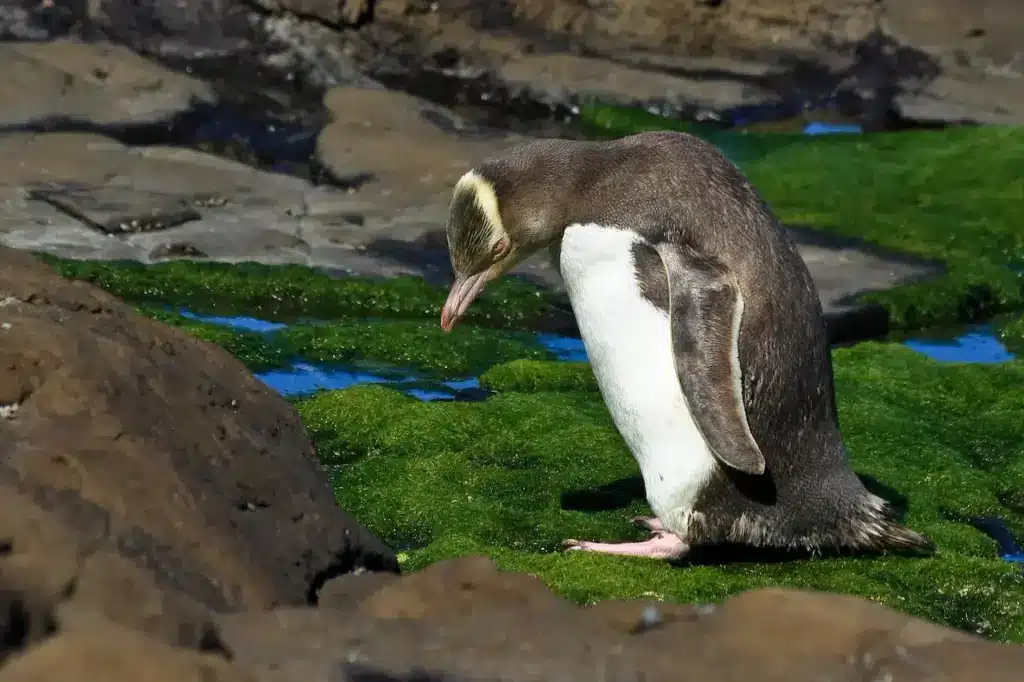
Status
The current status of this penguin is endangered, with an estimated population of 4,000. It is considered one of the world’s rarest penguin species. The main threats include habitat degradation, introduced predators as well as environmental changes. It is thought to be the most ancient of all living penguins.
In spring 2004, a previously undescribed disease killed off 60% of Yellow-eyed penguin chicks on the Otago peninsula and in North Otago. The disease has been linked to an infection of corynebacterium, a family of bacteria that also causes diphtheria in humans. It has recently been described as diphtheritic stomatitis. However, it seems as if this is just a secondary infection. The primary pathogen remains unknown.
Several mainland habitats have hides and are relatively easily accessible for those wishing to watch the birds come ashore. These include beaches at Oamaru, Moeraki light-house, a number of beaches near Dunedin, and The Catlins. In addition, commercial tourist operations on the Otago Peninsula also provide hides to vie yellow-eyed penguins.

